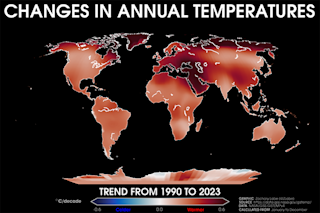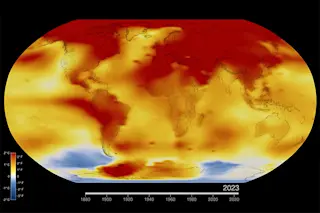Nature has really been dishing out the misery to millions of people on opposite sides of the Atlantic in the past few days. It might be tempting to conclude that the cold and snow that has reached from Mississippi to Maine this week (as seen in the animation of satellite images above), and the extreme storms that have caused devastating flooding in the United Kingdom, each are separate examples of the kind of weather mayhem that just happens to occur from time to time. But this winter, these events have not been a time-to-time phenomenon. The cold and snow on one side, and intense wind and rain storms on the other, have come one after the other, starting in late December. So how unusual is that, and what's going on? If a new scientific analysis is correct, the repeated bouts of extreme weather on either side of the Atlantic are ...
Move Over Polar Vortex: A Tale of Two Extreme Storms
Explore the rising frequency of extreme weather events linked to climate change, jet stream patterns, and North Atlantic storms.
More on Discover
Stay Curious
SubscribeTo The Magazine
Save up to 40% off the cover price when you subscribe to Discover magazine.
Subscribe












